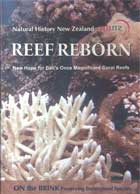
Reef Reborn: New Hope for Bali’s Once Magnificent Coral Reefs 2010
Distributed by The Video Project, PO Box 411376, San Francisco, CA 94141-1376; 800-475-2638
Produced by Natural History New Zealand
Directed by Michael Balion
DVD, color, 50 min.
Jr. High - General Adult
Environmental Studies, Conservation, Biology, Science
Date Entered: 11/28/2011
Reviewed by Barbara Butler, University of Oregon Institute of Marine BiologyThe majority of the coral reefs in Bali have been destroyed. Global warming has caused coral bleaching and humans have destroyed the reefs by fishing with explosives and cyanide. Reef Reborn tells the story of a Balinese community working to restore their reefs. Viewers also learn how marine scientists place structures near the destroyed reef and pass a current through the metal framework to stimulate mineral accretion of limestone. This creates a substrate for the corals to settle and repopulate the reef at five times their natural rate. The film is divided into 10 seamlessly connected chapters: Introduction; Conservation in Bali; Destroyed Reefs; Living Architecture; Bleaching Epidemic; Village Protection; Installing New Structures; Rising Sea Levels; Fishing Revolutionized; and Community Awareness.
There are a large number of coral reef educational resources from which to choose and the right pick for your collection will depend on your objectives and your primary audience. Some of the scenes in Reef Reborn are overly dramatic, but it is a good choice for public libraries and does a good job of conveying the grass roots effort of the Balinese community. In terms of a classroom resource focusing on coral reef biology, school and college libraries may want to consider two other resources also available from The Video Project: Exploring Coral Reefs: Reproduction and Survival (34 minutes); Climate Change and Coral Reefs: Comprehensive Classroom Resource (60 minutes).
This video is one of the four part series On the Brink: Preserving Endangered Species and is recommended for public libraries.